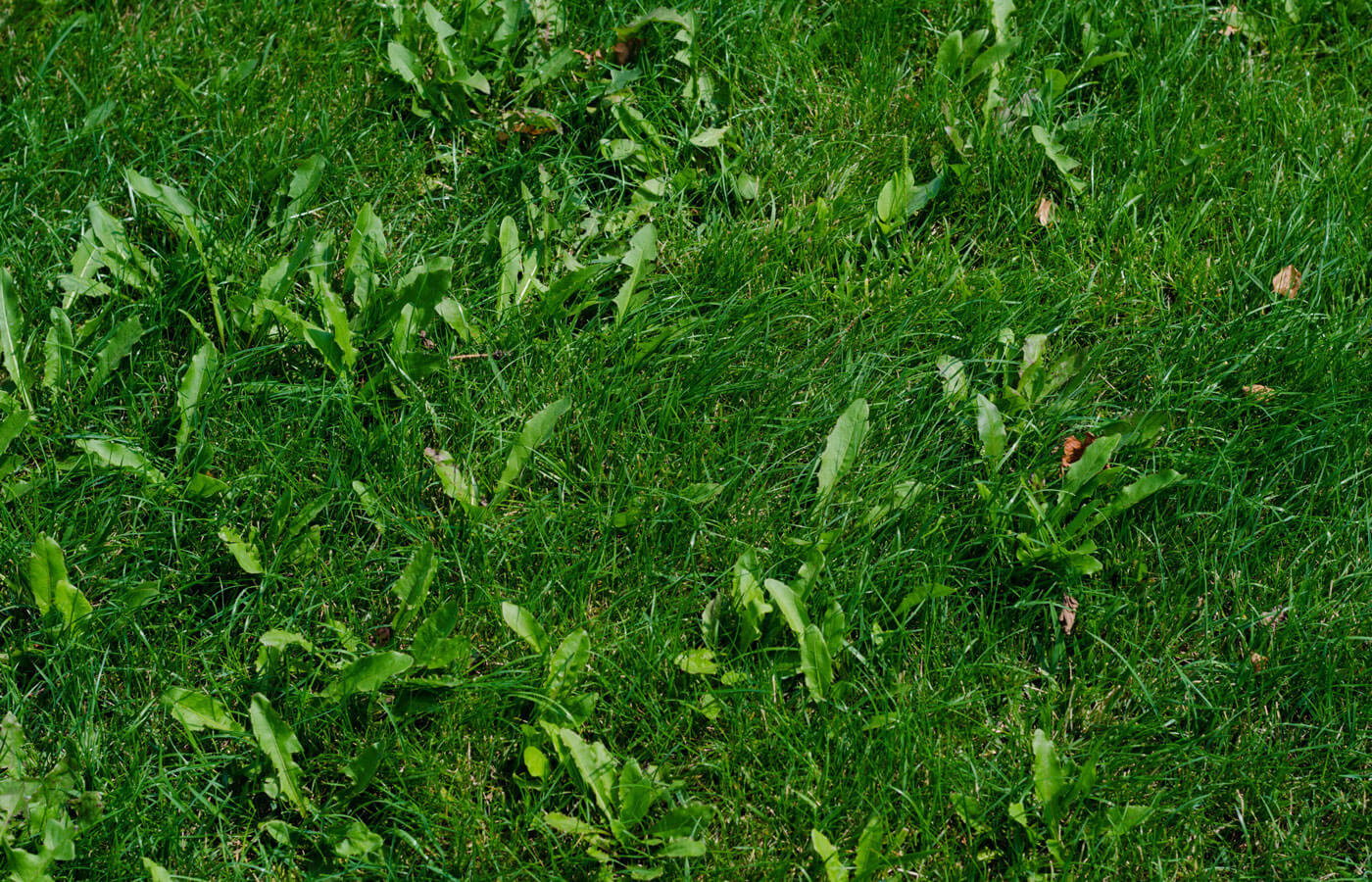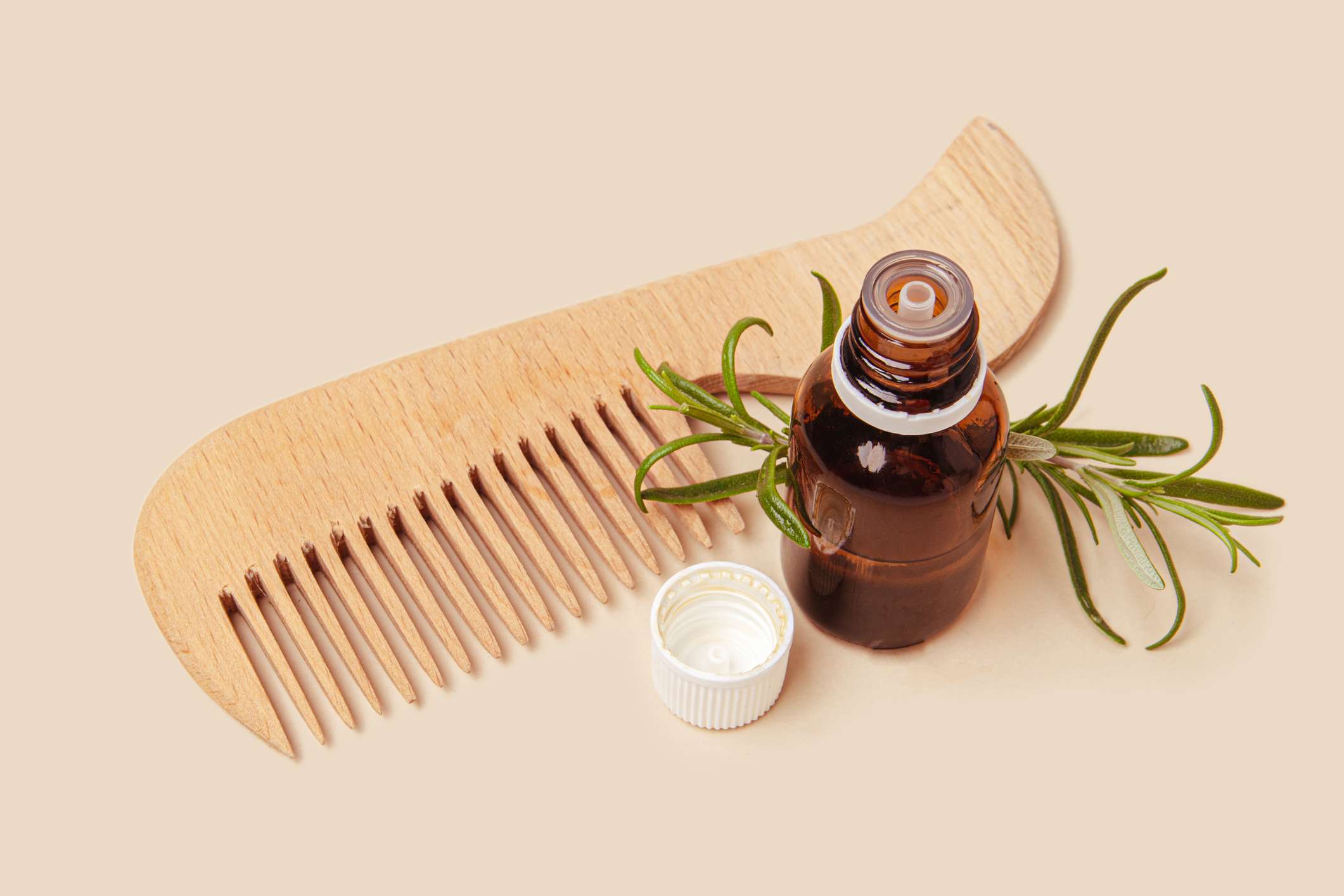Home>Gardening Tips and Tricks>What Does Pre Emergent Fertilizer Do


Gardening Tips and Tricks
What Does Pre Emergent Fertilizer Do
Modified: January 22, 2024
Discover how pre emergent fertilizer can solve your lawn problems and prevent weed growth. Learn more about the benefits and uses of pre emergent fertilizer.
(Many of the links in this article redirect to a specific reviewed product. Your purchase of these products through affiliate links helps to generate commission for Chicagolandgardening.com, at no extra cost. Learn more)
Table of Contents
Introduction
Welcome to the world of gardening and lawn care! If you’re new to the realm of fertilizers and wondering what pre emergent fertilizer is and why it’s important, you’ve come to the right place. Pre emergent fertilizers are a vital tool in maintaining a healthy and thriving garden or lawn. By understanding their role, benefits, and proper application, you can effectively prevent the growth of unwanted weeds and promote the growth of your desired plants.
Pre emergent fertilizers are specifically designed to inhibit the germination and growth of weed seeds in your soil. Unlike post emergent herbicides, which target and kill existing weeds, pre emergent fertilizers work proactively to prevent weeds from even sprouting. This is achieved by forming a barrier on the soil’s surface that inhibits weed seed germination. By implementing pre emergent fertilizers, you can significantly reduce the need for manual weeding and ensure a healthier and more attractive landscape.
Pre emergent fertilizers contain special chemicals called herbicides, which have specific properties that inhibit weed seed germination. These herbicides work by interfering with the growth process of weed seeds, either by inhibiting cell division or interfering with root and shoot development. By targeting the weed seeds before they sprout, pre emergent fertilizers provide an effective, long-lasting solution to weed control.
The benefits of using pre emergent fertilizer extend beyond weed control. It also aids in promoting the growth and development of your desired plants. By preventing weeds from absorbing vital nutrients and sunlight, pre emergent fertilizers give your plants a competitive advantage in accessing essential resources. This allows them to develop stronger root systems, produce healthier foliage, and yield more vibrant flowers or abundant harvests. In addition, pre emergent fertilizers help conserve water by reducing the competition for moisture in the soil.
Proper application of pre emergent fertilizers is crucial to maximize their effectiveness. Timing plays a vital role as pre emergent fertilizers need to be applied before the germination of weed seeds. This usually occurs during the early spring or fall, depending on your geographical location. Applying pre emergent fertilizers when the soil temperature reaches a certain threshold ensures that the herbicides activate and form a protective barrier before any weed seeds begin to sprout.
While pre emergent fertilizers are a valuable tool in weed control, it’s important to note that they are not a one-size-fits-all solution. Different types of pre emergent fertilizers are available on the market, each designed to target specific weed varieties. Understanding the type of weeds you want to prevent and selecting the appropriate pre emergent fertilizer will yield the best results.
Now that you have a basic understanding of pre emergent fertilizers, their benefits, and proper application, you can take the necessary steps to maintain a lush, weed-free garden or lawn. In the following sections, we will delve deeper into how pre emergent fertilizers work, the benefits they offer, as well as some common mistakes to avoid. Let’s get started on your journey to a thriving and beautiful outdoor space!
Definition of Pre Emergent Fertilizer
Before we dive deeper into the world of pre emergent fertilizers, let’s establish a clear definition of what they are. Pre emergent fertilizers are a type of herbicide-based fertilizer designed to prevent the germination and growth of weed seeds in your soil before they emerge above the surface. These fertilizers contain specific herbicides that function by inhibiting key processes in the weed seeds, effectively preventing them from sprouting and establishing themselves in your garden or lawn.
Pre emergent fertilizers work by forming a barrier on the soil’s surface. This barrier acts as a defense mechanism against weed seeds, preventing them from accessing the necessary conditions for germination and growth. It’s important to note that pre emergent fertilizers do not kill existing weeds; rather, they focus on preventing new weeds from taking root.
One of the key components of pre emergent fertilizers is the herbicide. These herbicides are carefully selected and formulated to target specific weed varieties while minimizing any negative effects on desirable plants. Depending on the specific pre emergent fertilizer, the herbicides may work by inhibiting cell division in the weed seeds or interfering with their root and shoot development. By disrupting these vital processes, the herbicides effectively halt the growth of the weed seeds, preventing them from emerging above the soil.
It’s worth noting that pre emergent fertilizers are not a magic solution that will completely eliminate all weeds from your garden or lawn. However, when used correctly and in conjunction with other weed control methods, they can significantly reduce weed populations and minimize the need for manual weeding. Pre emergent fertilizers are most effective when used as part of a comprehensive weed control strategy that includes proper lawn care practices, regular monitoring, and targeted spot treatments for any weeds that do manage to emerge.
Pre emergent fertilizers are typically available in granular or liquid form. Granular formulations are applied to the soil surface and then watered in to ensure proper distribution. Liquid formulations are sprayed onto the soil, allowing for easy and uniform application.
It’s important to follow the instructions provided by the manufacturer when applying pre emergent fertilizers to ensure both safety and efficacy. This includes taking into consideration the specific weed varieties you are targeting, the appropriate application timing, and any precautions or special instructions for lawn or garden maintenance. By adhering to these guidelines and making pre emergent fertilizers a regular part of your lawn care routine, you can effectively prevent weed growth and promote a healthier and more attractive outdoor space.
How Does Pre Emergent Fertilizer Work?
Now that we understand what pre emergent fertilizers are, let’s explore how they work to prevent weed growth and maintain a weed-free garden or lawn. Pre emergent fertilizers contain specific herbicides that target weed seeds and inhibit their germination and growth.
When applied correctly, pre emergent fertilizers create a barrier on the soil’s surface. This barrier acts as a shield, preventing weed seeds from accessing the necessary conditions for germination. The herbicides in the pre emergent fertilizer work by interfering with essential processes in the weed seeds. For example, some herbicides inhibit cell division in the weed seeds, preventing them from developing into viable plants. Others may disrupt root and shoot development, impeding the growth of emerging weeds.
The effectiveness of pre emergent fertilizers is dependent on proper timing and application. Timing is crucial as the fertilizer needs to be applied before weed seeds begin to germinate. This window of opportunity typically occurs during the early spring or fall, depending on your location and the weed varieties you are targeting. Applying the pre emergent fertilizer too early or too late may result in ineffective weed control.
Once applied, pre emergent fertilizers need to be properly incorporated into the soil for optimal results. Granular formulas should be watered in immediately after application. This allows the herbicides to penetrate into the soil and form a barrier at the correct depth, where weed seeds are most likely to germinate. Liquid formulations, on the other hand, should be sprayed evenly across the soil surface to ensure thorough coverage.
It’s important to note that pre emergent fertilizers are selective in their action. They target primarily weed seeds while having minimal impact on established plants and desirable vegetation. However, it’s still crucial to follow the manufacturer’s instructions and guidelines to avoid any potential damage to desired plants.
Pre emergent fertilizers typically provide weed control for a limited period of time, ranging from a few weeks to a few months, depending on the specific product and environmental factors. Therefore, it’s important to maintain a consistent schedule of reapplication to ensure ongoing weed prevention. Regular monitoring of your garden or lawn will also help identify any weed breakthroughs and allow for spot treatments as necessary.
It’s worth mentioning that pre emergent fertilizers are most effective as part of a comprehensive weed control strategy. Incorporating other methods such as proper mowing height, regular watering, and manual removal of existing weeds can enhance the overall weed control efforts and promote a healthier landscape.
By understanding how pre emergent fertilizers work and implementing them appropriately, you can effectively prevent weed growth and maintain a vibrant and weed-free outdoor space. In the next section, we will explore the various benefits of using pre emergent fertilizers in your lawn or garden.
Benefits of Using Pre Emergent Fertilizer
Using pre emergent fertilizer offers several benefits that contribute to the overall health and beauty of your garden or lawn. Beyond simply preventing weed growth, pre emergent fertilizer provides numerous advantages that make it an essential tool in your lawn care arsenal.
1. Weed Prevention: The primary benefit of pre emergent fertilizer is its ability to prevent weed growth. By applying pre emergent fertilizer at the right time and in the right manner, you can disrupt the germination and growth of weed seeds, significantly reducing weed populations in your garden or lawn. This proactive approach to weed control saves you time and effort in manual weeding and helps maintain a neat and tidy outdoor space.
2. Improved Nutrient Uptake: Weeds compete with your desired plants for valuable nutrients in the soil. By preventing weeds from germinating and establishing themselves, pre emergent fertilizer ensures that your plants have access to the nutrients they need to thrive. This promotes healthy growth, increased vigor, and overall improved plant health.
3. Water Conservation: Weeds not only compete for nutrients but also for water. By eliminating or reducing weed growth through pre emergent fertilization, water resources are conserved as they are directed towards your desired plants. This is particularly beneficial in water-scarce regions or during dry spells when every drop counts.
4. Time and Labor Savings: Pre emergent fertilizer significantly reduces the need for manual weeding. Instead of spending countless hours pulling weeds, you can devote your time to other important lawn care tasks or simply enjoy your outdoor space. This time and labor-saving aspect of pre emergent fertilizer translates to a more enjoyable gardening experience.
5. Enhanced Aesthetic Appeal: A weed-free garden or lawn is visually appealing and adds to the overall beauty of your outdoor space. Pre emergent fertilizer helps maintain a pristine appearance, allowing your desired plants to take center stage without being overshadowed by invasive weeds. This creates a more visually pleasing and well-maintained landscape.
6. Environmentally Friendly: Pre emergent fertilizer targets weed seeds specifically, minimizing the need for broad-spectrum herbicides that could potentially harm beneficial plants or wildlife. By using pre emergent fertilizer, you can reduce your environmental impact while effectively controlling weeds.
7. Cost-effective: Investing in pre emergent fertilizer upfront can save you money in the long run. By preventing weed growth, you reduce the need for expensive herbicides or hiring professional weed control services. Additionally, the time and effort saved from manual weeding can be put towards other lawn care or landscape enhancement activities.
To enjoy these benefits, it’s important to follow the manufacturer’s instructions and guidelines for proper application and reapplication of pre emergent fertilizer. Each product may have specific recommendations based on the targeted weed species, geographical region, and soil type.
With the multitude of advantages that pre emergent fertilizer offers, it’s easy to see why it is an essential component of an effective weed control strategy. In the next section, we will discuss the proper application techniques to ensure optimal results.
Proper Application of Pre Emergent Fertilizer
For pre emergent fertilizer to be effective in preventing weed growth, it’s essential to apply it correctly. Proper application ensures that the herbicides reach the desired depth in the soil and form a barrier that inhibits weed seed germination. Here are some key guidelines to follow:
1. Timing is Key: Timing is crucial when it comes to applying pre emergent fertilizer. It should be applied before weed seeds start to germinate. The specific timing will vary depending on the weed species and your geographical location. As a general rule, apply pre emergent fertilizer in early spring or fall, when the soil temperature reaches the threshold for weed seed germination.
2. Prepare the Soil: Before applying pre emergent fertilizer, it’s essential to prepare the soil. Remove any existing weeds or debris from the area. Rake or lightly till the soil to create a smooth and even surface. This helps improve the contact between the fertilizer and the soil, ensuring better absorption and effectiveness.
3. Follow the Instructions: It’s crucial to carefully read and follow the instructions provided by the manufacturer of the pre emergent fertilizer. Pay attention to the recommended application rate, as using too little may result in ineffective weed control, while using too much can damage desirable plants.
4. Evenly Distribute the Fertilizer: Whether using granular or liquid pre emergent fertilizer, ensure that it is evenly distributed over the targeted area. For granular formulations, use a spreader to apply the fertilizer and ensure uniform coverage. Liquid formulations can be sprayed evenly over the soil surface using a sprayer. Avoid concentrated application in one area, as this can lead to uneven results.
5. Incorporate into the Soil: Granular pre emergent fertilizers need to be watered in immediately after application. This helps to incorporate the herbicides into the soil at the appropriate depth. Watering also helps activate the herbicides and create the protective barrier against weed seed germination. Follow the recommended amount of water provided by the manufacturer to ensure proper incorporation.
6. Maintain a Regular Schedule: Keep in mind that pre emergent fertilizers have a limited effectiveness period. To maintain steady weed prevention, it’s important to reapply the fertilizer according to the recommended schedule. Follow the manufacturer’s guidelines for subsequent applications, typically every few months or as specified on the product label. Regular monitoring of your lawn or garden will also help identify any weed breakthroughs and allow for targeted spot treatments, if needed.
7. Safety Precautions: When applying pre emergent fertilizer, always wear appropriate protective gear, such as gloves and goggles, to protect yourself from any potential exposure or contact with the herbicides. Keep children and pets away from the treated area until the product has been fully absorbed or dried as per the manufacturer’s instructions.
By following these guidelines for proper application, you can ensure that pre emergent fertilizer effectively prevents weed growth and promotes a healthier lawn or garden. However, it’s essential to remember that pre emergent fertilizer is just one component of a comprehensive weed control strategy, and other measures such as proper watering, mowing, and ongoing maintenance are also needed to maintain a weed-free landscape.
Common Mistakes to Avoid When Using Pre Emergent Fertilizer
While pre emergent fertilizer can be a valuable tool in weed control, certain mistakes can hinder its effectiveness and potentially cause harm to your plants or the environment. To ensure optimal results and avoid common pitfalls, here are some mistakes to avoid when using pre emergent fertilizer:
1. Applying Too Late or Too Early: Timing is crucial when it comes to applying pre emergent fertilizer. Applying it too late, after weed seed germination has occurred, will render the fertilizer ineffective. On the other hand, applying it too early may result in the breakdown of the herbicides before the weed seeds start to germinate. Research the specific timing for your region and target weed species to ensure proper application.
2. Inadequate Soil Preparation: Proper soil preparation is essential for optimal absorption and effectiveness of pre emergent fertilizer. Failing to remove existing weeds or debris from the area can hinder the fertilizer’s ability to reach the soil surface and inhibit weed seed germination. Ensure you thoroughly prepare the soil by removing any obstacles and creating a clean, even surface before applying the fertilizer.
3. Using Incorrect Herbicides: Different pre emergent fertilizers are designed to target specific weed species. Using the wrong herbicide may not effectively inhibit the germination or growth of the weeds you want to control. Research the weed species prevalent in your area and select a pre emergent fertilizer that specifically targets those weeds for maximum effectiveness.
4. Over- or Under-Applying the Fertilizer: Applying too much or too little pre emergent fertilizer can have negative consequences. Over-application can lead to herbicide runoff, potentially harming desirable plants or polluting water sources. Under-application, on the other hand, may not provide sufficient control of weed seed germination. Follow the manufacturer’s recommended application rates and guidelines to ensure proper dosage and coverage.
5. Not Watering in Granular Formulations: Granular pre emergent fertilizers need to be watered in after application to incorporate the herbicides into the soil. Failing to do so can result in inadequate absorption and reduced effectiveness. Watering immediately after applying the granules ensures that the herbicides penetrate the soil at the appropriate depth and form a protective barrier against weed seed germination.
6. Neglecting Regular Reapplication: Pre emergent fertilizers have a limited effectiveness period, typically lasting a few months. Neglecting to reapply the fertilizer at the recommended intervals can allow weed seeds to germinate and establish themselves. Regular reapplication, as instructed by the manufacturer, helps maintain the weed-prevention barrier and ensures ongoing control of weed growth.
7. Lack of Monitoring: Monitoring your garden or lawn regularly is crucial to identify any weed breakthroughs or potential issues. While pre emergent fertilizers do a great job of preventing weed growth, they are not 100% foolproof. Some weed seeds may still manage to germinate and require spot treatments. Regularly inspect your outdoor space and address any emerging weeds promptly.
Remember, pre emergent fertilizer is just one part of a comprehensive weed control strategy. Incorporating other practices such as proper mowing height, regular watering, and manual weed removal will enhance the overall effectiveness of your weed control efforts.
By avoiding these common mistakes and following the proper guidelines for pre emergent fertilizer application, you can achieve a healthier, weed-free environment for your plants to thrive.
Alternatives to Pre Emergent Fertilizer
While pre emergent fertilizer can be an effective tool in weed control, there are alternative methods that you can consider incorporating into your lawn care routine. These alternatives can be used in conjunction with or as substitutes for pre emergent fertilizer, depending on your preferences and specific needs. Here are a few alternatives to consider:
1. Mulching: An effective and natural alternative to pre emergent fertilizer is the use of organic mulch. Mulching provides a protective layer on the soil surface, which helps to smother weed seeds and prevent them from germinating. Organic mulch, such as wood chips, straw, or compost, not only inhibits weed growth but also helps retain moisture in the soil, regulate soil temperature, and improve soil health. Applying a thick layer of mulch, around 2-4 inches, can be a beneficial weed control measure.
2. Manual Weeding: Hand pulling or using handheld tools to remove weeds is an effective and environmentally friendly method of weed control. Regularly inspect your garden or lawn and promptly remove any emerging weeds. For best results, pull weeds when the soil is moist, making it easier to remove the entire plant, including the roots. This method is labor-intensive but provides a targeted approach to weed control and allows you to specifically address problem areas.
3. Cultural Practices: Promoting healthy turf or desirable plants through proper cultural practices can naturally outcompete weeds. Maintain appropriate mowing height and watering schedules to encourage the growth of your desired plants while discouraging weed growth. Correct lawn or garden maintenance practices, such as dethatching, overseeding, and aerating, can also help create a dense lawn or plant canopy, minimizing space for weed seeds to germinate.
4. Post Emergent Herbicides: Unlike pre emergent fertilizers, post emergent herbicides target existing weeds rather than preventing their germination. These herbicides are applied directly to the foliage or plant parts of the weeds and work by disrupting their growth or killing them. Post emergent herbicides can be selective, targeting specific weed types, or non-selective, affecting a wide range of plants. Care must be taken to follow the instructions and avoid contact with desirable plants.
5. Organic Weed Control: If you prefer an organic approach to weed control, there are several methods you can try. Vinegar sprays, made by mixing household vinegar with water, can be used to treat and kill weeds. Boiling water poured over weeds can also be effective. Additionally, there are organic herbicides available on the market that utilize natural ingredients such as acetic acid, citric acid, or essential oils to control weeds.
It’s important to note that while these alternatives can be effective, they may require more effort and maintenance compared to pre emergent fertilizer. Understanding the specific needs of your garden or lawn and tailoring your weed control strategy accordingly will yield the best results. Integrating a combination of these alternatives and cultural practices can provide a well-rounded approach to maintaining a weed-free landscape.
Evaluate the pros and cons of each alternative and consider factors such as cost, labor, environmental impact, and effectiveness when choosing the best weed control methods for your specific situation. Experimenting with different techniques and finding what works best for your garden or lawn will lead to a healthier and more manageable outdoor space.
Conclusion
Pre emergent fertilizer is a valuable tool in weed control and plays a vital role in maintaining a healthy and beautiful garden or lawn. By understanding its definition, how it works, and the benefits it offers, you can effectively prevent weed growth and promote the growth of your desired plants. Proper application of pre emergent fertilizer, including timing, soil preparation, and incorporation, ensures optimal results and minimizes the chances of common mistakes that can hinder its effectiveness.
However, pre emergent fertilizer is not the only method available for weed control. Alternatives such as mulching, manual weeding, cultural practices, post emergent herbicides, and organic weed control offer additional options to manage weeds in your outdoor space. It’s important to evaluate the specific needs of your garden or lawn and choose the most suitable methods that align with your preferences and goals.
Regardless of the weed control method you choose, consistency and ongoing maintenance are essential. Regular monitoring, timely reapplication, and the integration of proper lawn care practices will help you maintain a weed-free and visually appealing landscape.
Remember, maintaining a healthy and weed-free outdoor space requires a comprehensive approach. While pre emergent fertilizer is effective in preventing weed growth, it is most impactful when combined with other practices such as proper mowing, watering, and manual weed removal. Creating a strong and vibrant lawn or garden encourages the growth of desired plants and naturally limits space for weed seed germination.
With the knowledge gained from this article, you now have the tools to effectively utilize pre emergent fertilizer and other weed control methods. By incorporating these practices into your lawn care routine, you can enjoy a lush, weed-free outdoor space that showcases the beauty of your chosen plants or creates a welcoming environment for outdoor activities.
Take the time to tailor your weed control strategy to your specific needs and preferences. Experiment with different methods and adjust as necessary to find the approach that works best for you. With dedication and consistent effort, you can achieve a healthy, thriving, and aesthetically pleasing outdoor space to enjoy for years to come.







